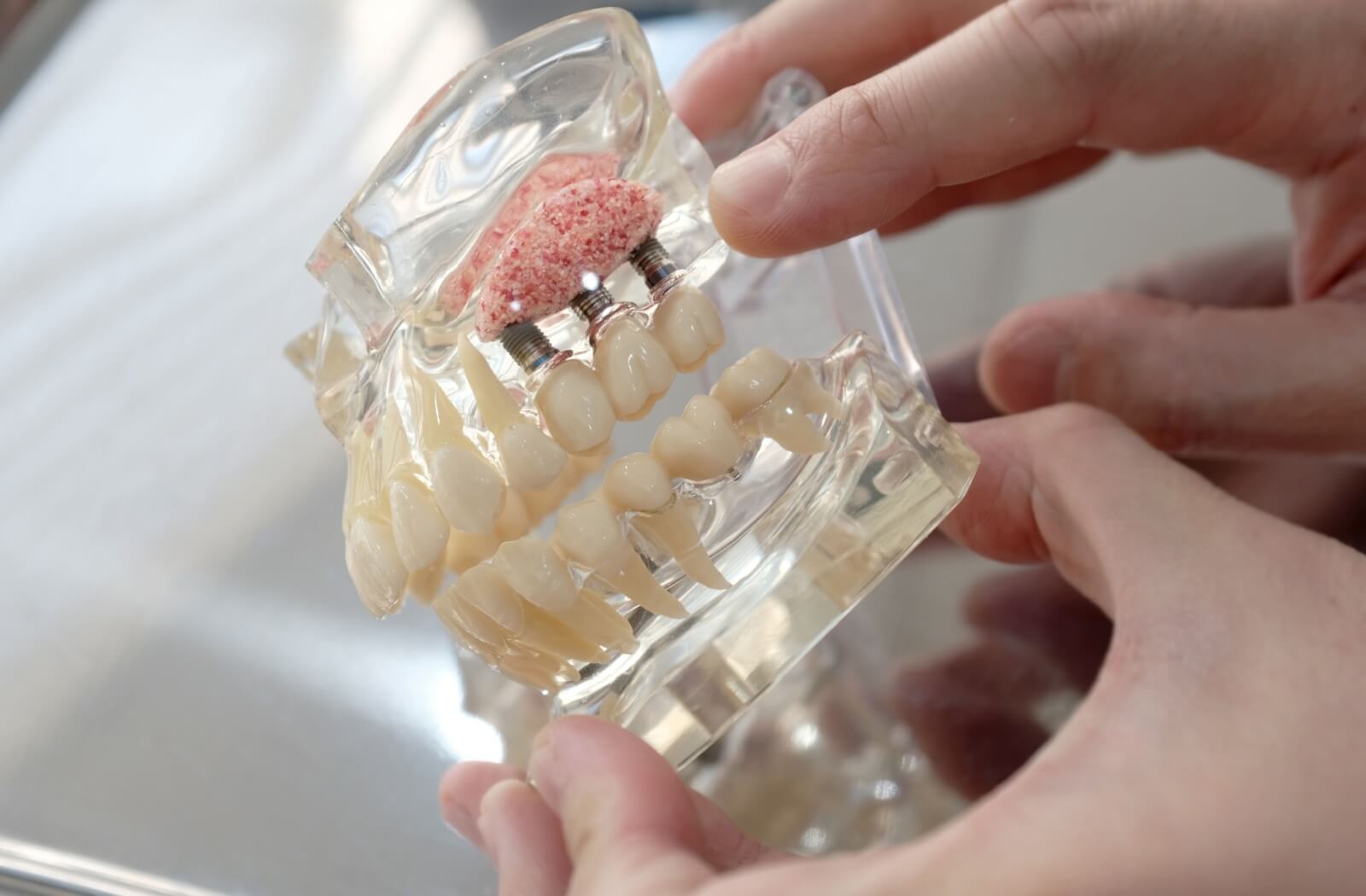Your Guide to Bone Grafting for Dental Implants

Dental implants are increasingly popular for restoring function and aesthetics following tooth loss. Unlike dentures or bridges, implants can provide a permanent solution by mimicking the structure of natural teeth. However, for an implant to succeed, it requires a strong and healthy jawbone. This is where bone grafting comes in. A common procedure, bone grafting helps to ensure many patients can enjoy the benefits of dental implants.
If you’ve been told you may need a bone graft or are simply curious about how they work, we’ll walk you through the essentials, from what bone grafting is to why it’s important for dental implants.
What Are Dental Bone Grafts?
A dental bone graft is designed to add or replace bone mass in the jaw. This technique is often used when patients experience bone loss due to missing teeth, gum disease, injuries, or other medical conditions that affect teeth and bones. The primary goal is to restore the jawbone's strength and density in preparation for a dental implant or to maintain oral health.
When a tooth is lost, the surrounding bone deteriorates. Dental implants cannot fuse securely to the jaw without sufficient bone support, making the implant procedure unfeasible. A bone graft provides the stability required for a long-lasting dental implant.
Dentists may also recommend a bone graft to preserve the jaw's structure, support dentures, or address changes caused by bone loss.
Why Bone Grafting May be Necessary for Dental Implants
While dental implants are durable, they rely on a strong foundation in the jawbone. Here’s why bone grafting plays a critical role in implant success:
- Prepares the jawbone for implants: If your jaw is too soft or thin, it cannot support the force of chewing. Bone grafting reinforces the area, ensuring the implant remains stable.
- Prevents implant failure: Weak jawbones increase the risk of implants loosening or failing entirely.
- Enhances long-term success: Bone grafting improves the implant's durability and functionality over time by ensuring a sturdy base.
Without a bone graft, patients with severe bone loss risk losing the opportunity to receive dental implants altogether.
The Dental Implant Process
Getting a dental implant involves several steps to ensure its long-term success. A thorough exam is the starting point, determining whether you are a good candidate and whether a bone graft will be necessary.
- Initial consultation: Your dentist will assess your oral health and review imaging to evaluate the condition of your jaw.
- Bone grafting (if needed): If there is insufficient bone mass, a grafting procedure will be scheduled. Your body must heal and integrate the graft material, which typically takes a few months.
- Implant placement: A titanium post is inserted into the jawbone after successful healing. This serves as the foundation for the artificial tooth.
- Osseointegration: The implant fuses with the surrounding bone, creating a durable anchor.
- Abutment and crown placement: The abutment and custom-made crown are attached once osseointegration is complete.
Types of Dental Bone Grafts

There are several types of bone grafts, each with specific benefits depending on individual needs.
Autografts
Autografts use bone material from your body, typically harvested from the jaw, hip, or other sites. This option is often considered the gold standard because the tissue is highly compatible and promotes natural healing.
Allografts
Allografts use bone material from a donor (typically human cadaver bone). This material is processed and sterilized to ensure safety, providing an effective alternative without requiring a secondary surgical site.
Xenografts
Xenografts rely on bone material from non-human sources, such as cows or coral. While the source is different, the material is altered to make it safe and effective for human use.
Alloplastic Grafts
Alloplastic grafts use synthetic materials, such as calcium phosphate. These materials are designed to mimic natural bone and encourage new bone growth in the jaw.
Your dentist will recommend the best option based on factors like bone loss severity, personal preferences, and medical considerations.
Benefits of Dental Bone Grafts
Bone grafting is about making dental implants possible and offers several benefits for oral health and functionality.
- Restores stability: Bone grafting strengthens the jawbone, making it stable for implants or other prosthetics.
- Prevents further bone loss: Jawbone loss can progress over time without intervention. Grafting halts this deterioration, preserving your oral health.
- Improves oral function: A stable jaw enhances chewing, speaking, and other daily activities.
- Supports aesthetic restoration: Bone grafting can restore facial contours, preventing the "sunken" appearance that often accompanies significant bone loss
Bone grafting improves jaw strength and oral structure, supporting both the practical and visual aspects of smiles.
How Markham Dental Can Help
At Markham Dental, we understand that deciding on dental procedures like bone grafting and implants can feel overwhelming. But you don’t have to navigate it alone.
Our experienced team is dedicated to providing personalized, stress-free care tailored to your needs. From the initial consultation to completing your procedure, we are here to guide you at every step.
Curious about whether bone grafting or dental implants are right for you? Contact us today to schedule an appointment. We’ll help you reclaim your smile and strengthen your oral health for years to come.